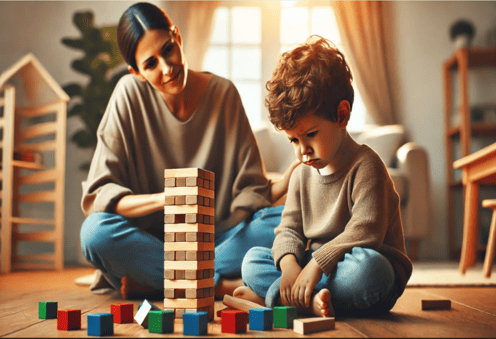Frustration is a normal and necessary part of growing up. Whether it’s a toy that won’t work, a game they didn’t win, or a task they can’t quite complete, young children often experience frustration intensely. The good news is that with your support, they can learn how to manage these feelings in healthy, constructive ways.
In this article, we’ll explore simple and effective strategies to help your child handle frustration, build emotional resilience, and grow in patience and self-control.
Why Frustration Happens
Frustration often arises when children:
- Can’t achieve something they want right away
- Feel overwhelmed or overstimulated
- Are tired, hungry, or stressed
- Lack the vocabulary or tools to express themselves
- Are learning something new and challenging
Understanding the causes helps you respond with empathy rather than irritation.
Stay Calm and Present
Your reaction sets the tone. When your child is frustrated, your calm presence is the first and most powerful tool.
- Get down to their level
- Speak softly and slowly
- Show empathy: “I see you’re feeling frustrated.”
Staying calm helps regulate your child’s nervous system, even if they’re in meltdown mode.
Name the Feeling
Help your child understand what they’re experiencing by naming the emotion:
- “It looks like you’re frustrated because the blocks keep falling.”
- “Are you feeling upset because it didn’t go the way you wanted?”
- “It’s okay to feel that way. I’m here to help.”
Labeling emotions builds emotional intelligence and gives your child the language to express themselves next time.
Validate Their Experience
Resist the urge to fix the problem right away. Instead, acknowledge how they feel.
- “That must be really hard.”
- “I get frustrated too when things don’t work.”
- “It’s okay to feel upset—it means you care about doing it right.”
Validation doesn’t “spoil” the child—it strengthens their self-awareness and trust.
Teach Calming Strategies
Once the child is calm enough to listen, introduce simple tools they can use when they feel frustrated:
- Deep breaths (“Smell the flower, blow out the candle”)
- Squeezing a pillow or stress ball
- Going to a quiet space
- Drawing or coloring how they feel
- Saying, “I need help,” or “Can we try again?”
Practice these when they’re not upset so they’re ready when frustration strikes.
Break Tasks into Smaller Steps
Sometimes frustration comes from overwhelm. Help your child break down big tasks into smaller, manageable steps:
- “Let’s do the first part together, then you can try the next.”
- “We can take a break and come back to it later.”
- “Let’s try one more time together.”
Small wins build confidence and reduce stress.
Encourage a Growth Mindset
Praise effort, not just outcomes. Help your child see mistakes and setbacks as part of learning.
Say things like:
- “You worked really hard on that.”
- “It didn’t work this time, but you learned something new.”
- “Every time you try, you get stronger!”
A growth mindset helps children face challenges with curiosity instead of fear.
Model How You Handle Frustration
Children are always watching. Show them how you manage your own frustration:
- “I’m feeling a little frustrated, so I’m going to take a deep breath.”
- “That didn’t go how I planned, but I’ll try again.”
- “It’s okay to be upset—I just need a minute to calm down.”
Your example is one of the most powerful teaching tools.
Know When to Offer Help (and When to Step Back)
Offer help when your child is overwhelmed, but avoid rescuing them too quickly.
- “Would you like help, or do you want to try it again first?”
- “I’m here if you need me.”
- “You’re working really hard—I believe in you.”
Balancing support with independence helps children build persistence.
Final Thoughts: Frustration Is a Path to Growth
Frustration isn’t something to be avoided—it’s something to be navigated with care. Every time you help your child through a frustrating moment, you’re building their emotional strength, problem-solving skills, and confidence.
With your guidance, they’ll learn that frustration is just a feeling—not a wall. And on the other side of that feeling is growth, resilience, and pride.
